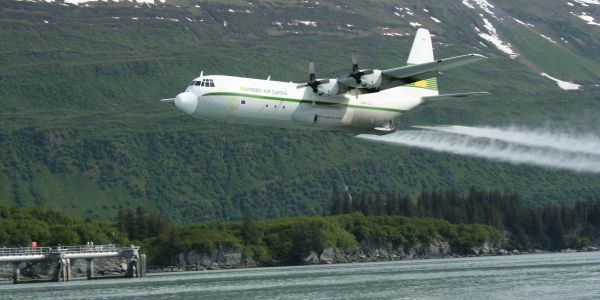Non-mechanical Response Options

Non-mechanical response describes spill response methods where chemical countermeasures or similar tools are used to treat spilled oil in order to minimize the environmental impacts of the oil spill. Non-mechanical response methods require special authorization or approval by state and federal authorities. Non-mechanical response tactics are used in cases where mechanical response is not feasible or when mechanical response must be augmented due to the size of the spill.
• Dispersant Tactics involve the application of chemical formulations that contain surface active agents (surfactants) that lower the surface tension between oil and water, promoting the formation of oil droplets and reducing the tendency of oil to stick to other droplets or surfaces, thereby enhancing dispersion into the water column. In Alaska, dispersant tactics are only applicable to on-water oil spills.
| Oil Dispersant Guidelines |
| Dispersant Use Plan (PDF 3M) |
• In-situ Burning Tactics involve the collection and concentration of oil within a designated area, the controlled burning of that oil, and the removal of the burn residue. In-situ burning tactics are organized based on the spill location and type of environment.
| In Situ Burning |
| STAR Manual ISB (PDF 2M) |
| SMART Monitoring Protocols |

 Indicates an external site.
Indicates an external site.